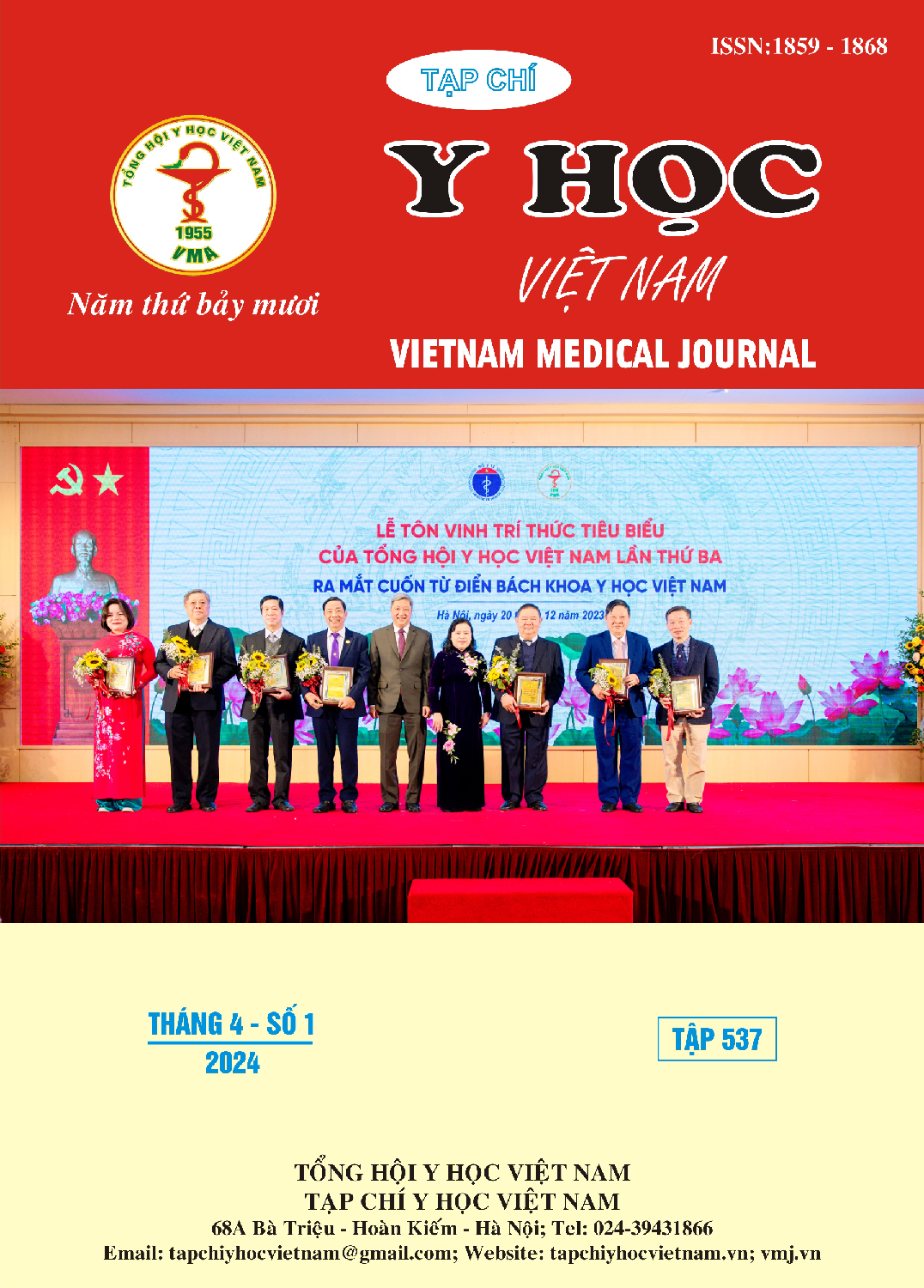DESCRIPTION OF BONE DENSITY CHARACTERISTICS AND RELATED FACTORS IN PATIENTS WITH OSTEOPOROSIS AT HA DONG HOSPITAL OF TRADITIONAL MEDICINE
Main Article Content
Abstract
Objectives: Describing the characteristics of bone density and related factors in patients with osteoporosis at Ha Dong hospital of traditional medicine. Subjects and methods: The cross-sectional descriptive study was performed on 154 patients diagnosed with osteoporosis with using dual-energy X-ray absorptiometry conducted at Department of Laboratory and Diagnostic Imaging at Ha Dong Hospital of Traditional Medicine from December, 2022 to October, 2023. Results and conclusion: The femur T-score gradually decreases with age; lumbar spine T-score was the lowest at the thin group; lumbar spine T-score in subjects with a history of natural fractures was lower than those without natural fractures; lumbar spine T-score in subjects with a history of parental hip fracture was lower than those without a history of parental hip fracture; lumbar spine T-score of the group using long-term glucocorticoid was lower than those not using; The femur T-score of the group giving birth to more than 3 children is lower than those ≤3 children; The longer the menopause (>20 years) was, the lower the T-score got; The difference is statistically significant (p<0.05). The femur and lumbar spine T-score of the smoking group was lower than that of the non-smoking group; The femur and lumbar spine T-score of the alcohol drinking group were lower than the non-drinking group; The average T-score of the femoral neck and lumbar spine in the early menopause group was lower than the non-early menopause group; The average T-score between the two sexes has no difference; (p>0.05
Article Details
Keywords
Osteoporosis, bone density, risk factor
References
2. Nguyễn Đình Nguyên. Vai trò của các yếu tố nguy cơ trong tiên đoán gãy xương. Kỷ yếu các báo cáo hội nghị khoa học loãng xương, gãy xương và vitamin D, Cần Thơ. 2010: 35-40.
3. Nguyễn Thị Mai Hương. Nghiên cứu yếu tố nguy cơ loãng xương và dự báo gãy xương theo mô hình Frax ở nam giới từ 50 tuổi trở lên. Luận án Tiến sĩ Y học, trường Đại học Y Hà Nội. 2012.
4. Võ Thị Thanh Hiền. Thực trạng và một số yếu tố liên quan tới loãng xương ở phụ nữ đến khám tại Bệnh viện Hữu Nghị đa khoa Nghệ An. Tạp chí Y học Việt Nam. 2020; (503): 252-259.
5. Alswat KA. Gender Disparities in Osteoporosis. J Clin Med Res. 2017 May;9(5):382-387. doi: 10.14740/jocmr2970w. Epub 2017 Apr 1. PMID: 28392857; PMCID: PMC5380170.
6. De Laet C Kanis JA, Oden A, et al. Body mass index as a predictor of fracture risk: a meta-analysis. Osteoporos Int. 2005; 16(11): 1330-1338.
7. Ho-Pham LT, Nguyen TV. The Vietnam Osteoporosis Study: Rationale and design. Osteoporos Sarcopenia. 2017; 3(2): 90-97.
8. NE. Lane. Epidemiology, etiology, and diagnosis of osteoporosis. Am J Obstet Gynecol. 2006; 194(2 Suppl):S3-11.


